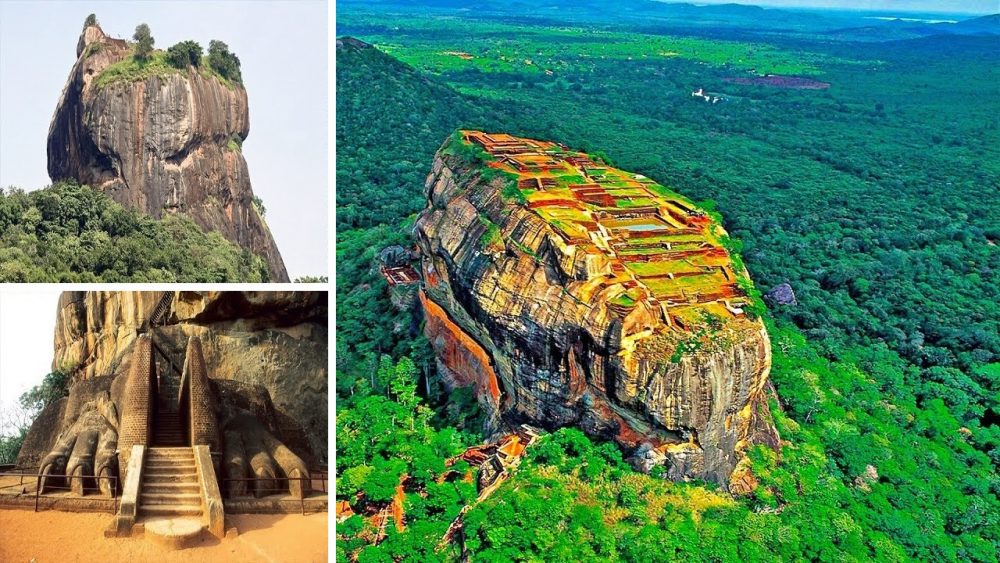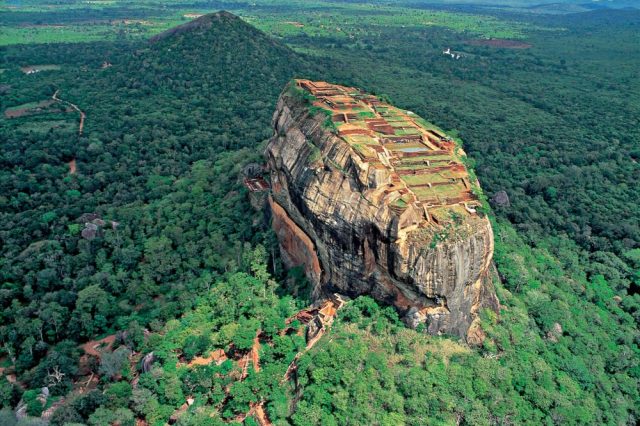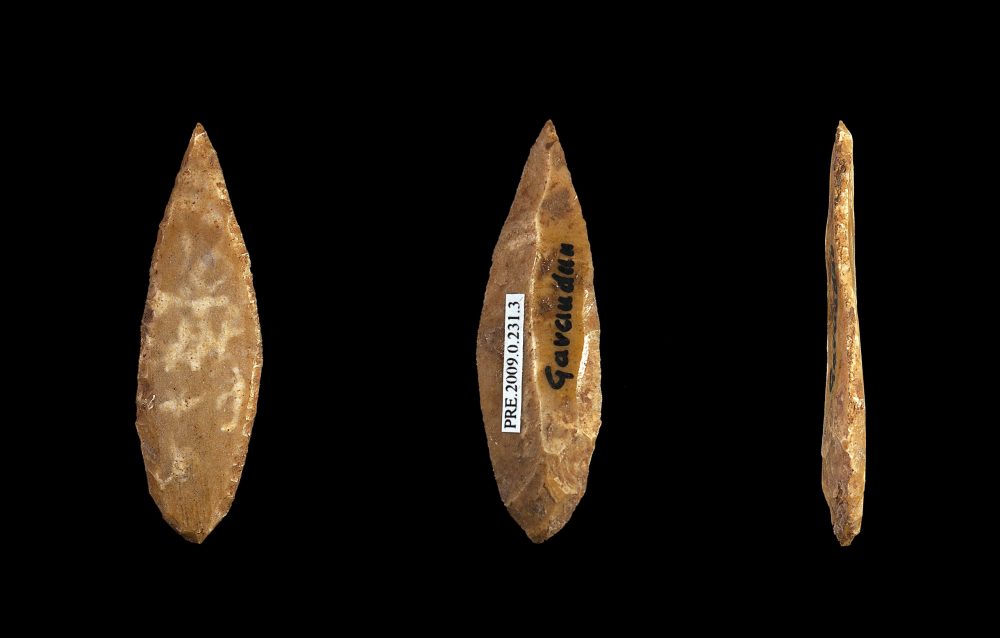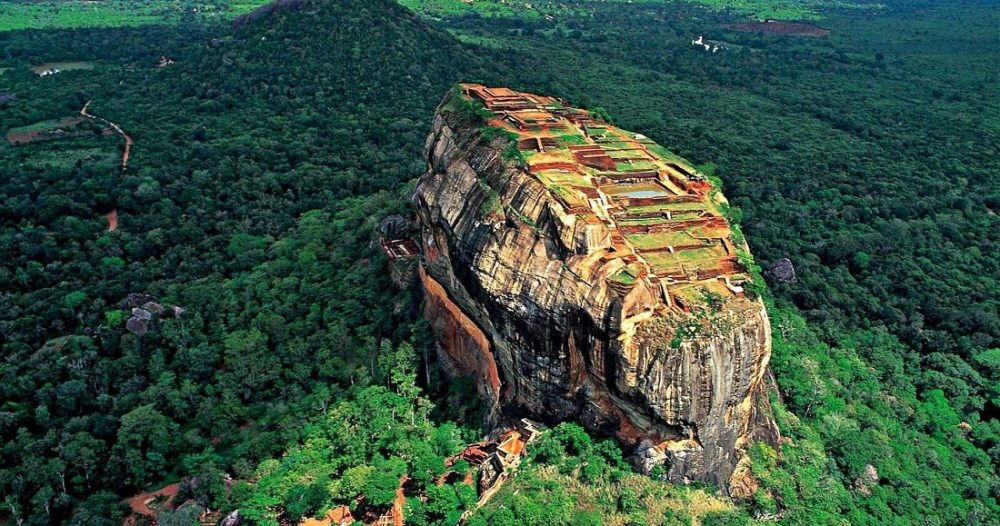The ancient rock fortress of Sigiriya is a true wonder of the world.
Located north of the Matale district in Sri Lanka, at a massive rock formation 200 meters high lie the massive ruins of a magnificent ancient temple, reaching for the sky.
Once the epicenter of the short-lived kingdom of Kashyapa, the ancient rock fortress of Sigiriya is a true wonder of ancient engineering and urban planning.
Sigiriya sits atop the remnant of the eruption of hardened magma of an extinct and long-eroded volcano. The site itself is visible for kilometers in all directions.

Mind-bending, near-vertical walls, soar towards a flat, topped summit, home to incredible ancient secrets.
Thought to have been built between 477 – and 495 CE, the fortress was commissioned by King Kasyapa.
The Palm Leaf Book (Puskola Potha) offers insight into Sigiriya’s legendary past. It describes how the temple’s architect was a Danava called Maya Danava.
Davanas were a race descending from Daksha, one of the sons of Lord Brahma, the creator God according to Hinduism.
Its visitors are welcomed by a pair of humongous lion paws, carved in the past halfway up the side of this rock. And it is thanks to these paws, the temple is called Lion Rock—Sīhāgiri.

The rock fortress reaches out to the sky, as people on its summit observed the stars soar above the temple.
Its surroundings were built in harmony with the cosmos, and even today you can see evidence of colorful frescoes and meticulously decorated art.
Rightfully dubbed the Alakamandava, or the City of the Gods, this ancient rock fortress is unlike any other structure on Earth.
The history of Sigiriya is a rich and plentiful one. Studies of the region have revealed evidence of constant human occupations dating back more than five thousand years. It has been found that caves in the vicinity were occupied by Buddhist monks and ascetics from as early as the 3rd century BCE.
The site itself is considered one of the most astonishing and important urban planning sites of the first millennium.
Experts refer to the site plan as being very elaborate and imaginative.
The builders of Sigiriya combined concepts of symmetry and asymmetry to intentionally interlock the man-made geometrical and natural forms of the surroundings.
The rock fortress features a mirror wall on site.
This mirror is said to have been so polished that the king could see his reflection perfectly as he walked beside it.
The mirror wall was made of brick masonry and covered in highly polished white plaster.
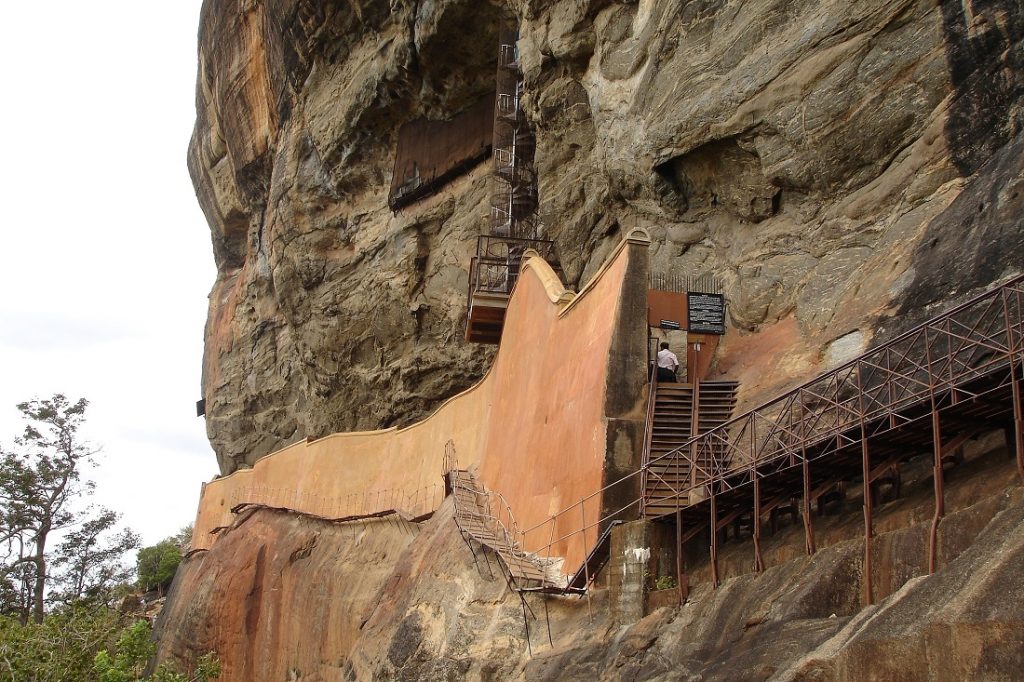
Today, the wall is partially covered with different inscriptions that have been etched by visitors throughout history.
Some of the inscriptions on the mirror wall date back as far as the 8th century.
People who would visit Sigiriya would write about love, irony, and life experiences. Today, visitors are not allowed to write on the wall in order to protect the ancient writings.
The Archaeological Commissioner of Ceylon deciphered 685 verses written in the 8th, 9th, and 10th centuries CE on the mirror wall.
Join the discussion and participate in awesome giveaways in our mobile Telegram group. Join Curiosmos on Telegram Today. t.me/Curiosmos

